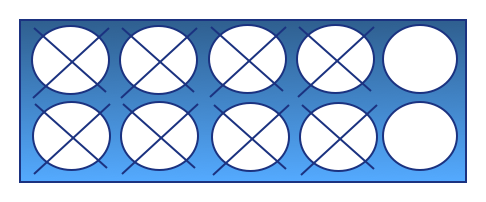Sometime back read an article about how proximity to goals motivates individuals to move faster towards the goals. It is very important for people to know their progress to understand the proximity to the goal. I found that it worked on me when I was driving back to town and finished the last 30 kms significantly faster than the average speed during the rest of the journey though the travel conditions were almost similar. I also observed this behaviour with my niece & nephews in kindergarden; I used to carry them from school to home but the moment they see the house, they jump off and run inside.
How do we relate to this at our workplace? No, I am not talking about the carrot and stick approach. It is like having feature completeness charts, burn down charts and other visual indicators at work that helps visualize progress. Brain tends to reward itself with dopamine which gives a sense of accomplishment. Completing a small task does not give much of a sense of accomplishment, but pursuing a tough task may be daunting.

If people are helped with progress indicators then the task becomes easy. It is the most commonly used part in the loyalty points, people are found to be rushing their last two coffee purchases for a free coffee than the speed in which they consumed their first few. It has also been observed that people will slow down once the milestone has been achieved, they would not be buying their 11th coffee at the same speed they got their earlier onces before their reward. That is because we want to be in a state of Anxiety Neutrality (otherwise known as Comfort Zone) that we would not kick start something. An illusion of progress or things already started may get people started.

In the above illustration both coupons have the same target of 10 coffees but people are likely to get started on the second one faster as already two of them are struck out. This illusion of getting started is used by many organisations which run loyalty programs by giving joining bonus. At workplace I have observed that people at work in long duration projects initially start out slow for few weeks~months and then increasingly put hours to get the project out. Once the project is over then the resetting to a slow pace happens.
I figured out that this kind of behaviour is less common in an iterative approach and there is always a healthy sustained pace. If we plan entire work in small chunks then visualisation of progress get much easier, which gives a sense of progress and creates multiple short term and long term goals. Goal gradient effect plays an important role in iterative development.
Mark, iterative approach and healthy sustained pace? don’t think both of them can be included in one sentence… that’s my feeling anyways…